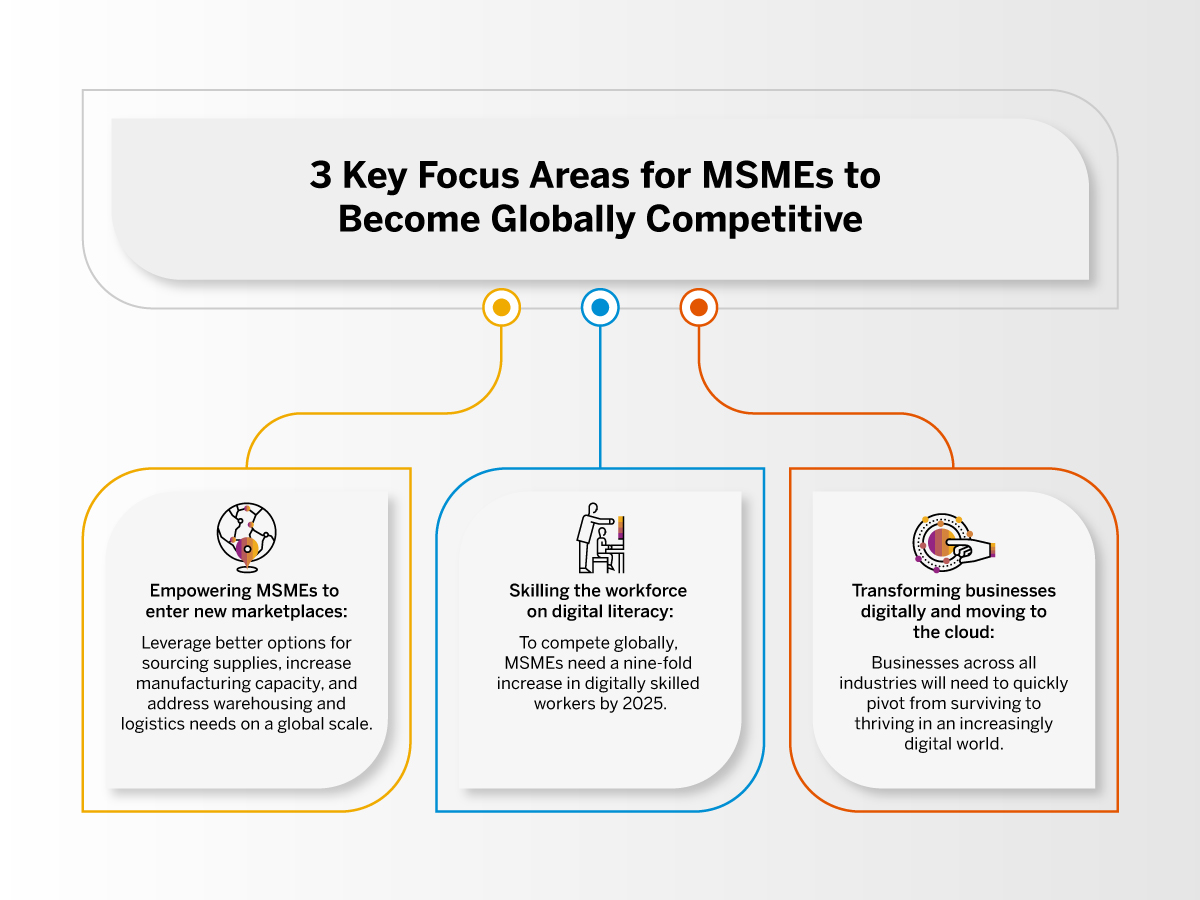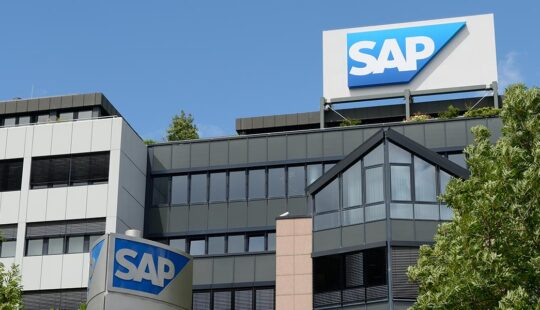Facing the most significant crisis in our generation, communities across India have come together to mitigate the impact of COVID-19. Even micro, small, and midsize Business enterprises (MSMEs) across India are no exception, as they look for ways to be self-reliant enough to seize new market opportunities and drive growth.
Earlier this year, I had the honour of joining NK Singh, chairman of the 15th Finance Commission of India, on a panel discussion during the launch of our Dare2Dream Awards and Mentors of Global Bharat Programme. And his perspective on the importance of digitalisation in relation to India’s economic future resonated with me, especially when it comes to MSMEs growth.
“MSMEs are central to becoming a global player, and there is a big role for technology,” remarked Mr. Singh. “We need to enable the highest level of access to technology, reduce the cost of this access, and consider the degree which enables their linkages to other technologies. These require active support to inoculate the innovation culture in MSMEs.”
In line with Mr. Singh’s thoughts, “the missing middle” needs to be empowered to help fulfil such national ambitions. While more than 6.3 crore MSMEs contribute about 29% to the GDP, 600 large companies add approximately 48%. This means that at least 10,000 small and midsize companies need to become either midsize or large enterprises by 2030 to achieve such globally competitive dynamism – and this rapid scale can only be achieved with technology.

Global Competitiveness Begins with Innovation
SMEs are increasing their awareness of the power of technology as they digitalise their operations to optimise the benefits of government and industry measures. As a result, they are becoming self-reliant, future-ready, and bold in their global ambitions across three crucial aspects of their business.

1. Empower MSMEs to enter new Marketplaces
The pandemic has underscored how deeply interconnected businesses are – and this realisation couldn’t have happened at a better time. According to IDC, 62% of midsize organisations are looking to steadily grow by competing in new markets.
This rising trend is an exceptional opportunity for Indian MSMEs to expand, even during times of demand volatility. They can leverage better options for sourcing supplies, increasing manufacturing capacity, and addressing warehousing and logistics needs on a global scale. Furthermore, active participation in digital business networks allows them to introduce unique products, services, and connections to enterprises worldwide.
Mentorship and recognition programmes also play a key role as the Indian government encourages MSMEs to actively contribute to the global marketplace. Even our Mentors of Global Bharat programme and Dare2Dream Awards empower Indian businesses to nurture a self-actualisation model of professional and personal success – at the global stage.
2. Skilling the workforce on digital literacy
The skills of every employee are critical to a company’s success, no matter the industry. From automotive and manufacturing to high tech and customer services, organisations that fared best during this pandemic have addressed gaps in their workforce’s digital literacy as part of their overall business performance strategy.
To compete globally, MSMEs need a nine-fold increase in digitally skilled workers by 2025. Such competencies include data analysis, cross-network collaboration, on-demand learning, and real-time response to operational change.
Considering half the population is below the age of 25, government agencies and industries understand the opportunity to nurture in-demand skills. For example, SAP India and Microsoft have a joint initiative, the TechSaksham programme, to offer training and learning opportunities to young women from underserved communities, so they can build careers in technology.
3. Transforming businesses digitally and moving to the cloud
When Indian society reopens, businesses across all industries will need to quickly pivot from surviving to thriving in an increasingly digital world. And it seems that MSMEs are getting the message: Dun & Bradstreet reported that 82% of businesses with annual revenue less than ₹ 300 crore have digitalised their daily operations, reducing costs and enhancing competitiveness.
Perhaps more interesting is that India is adopting cloud-based ERP solutions at a higher rate than the rest of the Asia-Pacific and Japan. All this activity builds the foundation MSMEs need to help achieve India’s aspiration to become a global leader in terms of GDP contribution and employment generation. A NASSCOM study suggests that SMEs can contribute up to 30% of the cloud market by 2025 and drive 25%–30% higher productivity and 15%–20% lower operational costs to the country’s GDP.
An Ecosystem for Globally Competitive Businesses
India’s economic policy of Atmanirbhar Bharat inspires MSMEs to be globally competitive by creating an ecosystem that unites policy makers, industries, and technologies. With the continuous support of a forward-looking government administration, companies can affordably access the technology necessary to move forward.
With their contribution to the economy and employment they create, MSMEs are becoming a bedrock for the Indian economy, which is an immense opportunity for empowering our nation as a globally competitive player.
Ready to renew your sense of resilience? Read the IDC paper, “Business Reimagined: Driving Greater Efficiency and Resiliency,” sponsored by SAP, for additional insights on the road ahead.
Source: Forbes



